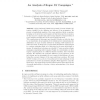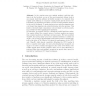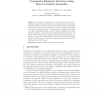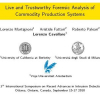RAID
2010
Springer
13 years 10 months ago
2010
Springer
Abstract. Run-time malware detection strategies are efficient and robust, which get more and more attention. In this paper, we use I/O Request Package (IRP) sequences for malware d...
RAID
2010
Springer
13 years 10 months ago
2010
Springer
Application-level protocol specifications are helpful for network security management, including intrusion detection, intrusion prevention and detecting malicious code. However, c...
RAID
2010
Springer
13 years 10 months ago
2010
Springer
Network intrusion detection systems (NIDS) make extensive use of regular expressions as attack signatures. Internally, NIDS represent and operate these signatures using finite au...
RAID
2010
Springer
13 years 10 months ago
2010
Springer
Malicious software includes functionality designed to block discovery or analysis by defensive utilities. To prevent correct attribution of undesirable behaviors to the malware, it...
RAID
2010
Springer
13 years 10 months ago
2010
Springer
The insider threat against database management systems is a dangerous security problem. Authorized users may abuse legitimate privileges to masquerade as other users or to maliciou...
RAID
2010
Springer
13 years 10 months ago
2010
Springer
Abstract. Rogue antivirus software has recently received extensive attention, justified by the diffusion and efficacy of its propagation. We present a longitudinal analysis of th...
RAID
2010
Springer
13 years 10 months ago
2010
Springer
Abstract. In the ongoing arms race against malware, antivirus software is at the forefront, as one of the most important defense tools in our arsenal. Antivirus software is flexib...
RAID
2010
Springer
13 years 10 months ago
2010
Springer
Abstract. An epidemic is malicious code running on a subset of a community, a homogeneous set of instances of an application. Syzygy is an epidemic detection framework that looks f...
RAID
2010
Springer
13 years 10 months ago
2010
Springer
Abstract. Many worm detectors have been proposed and are being deployed, but the literature does not clearly indicate which one is the best. New worms such as IKEE.B (also known as...
RAID
2010
Springer
13 years 10 months ago
2010
Springer




